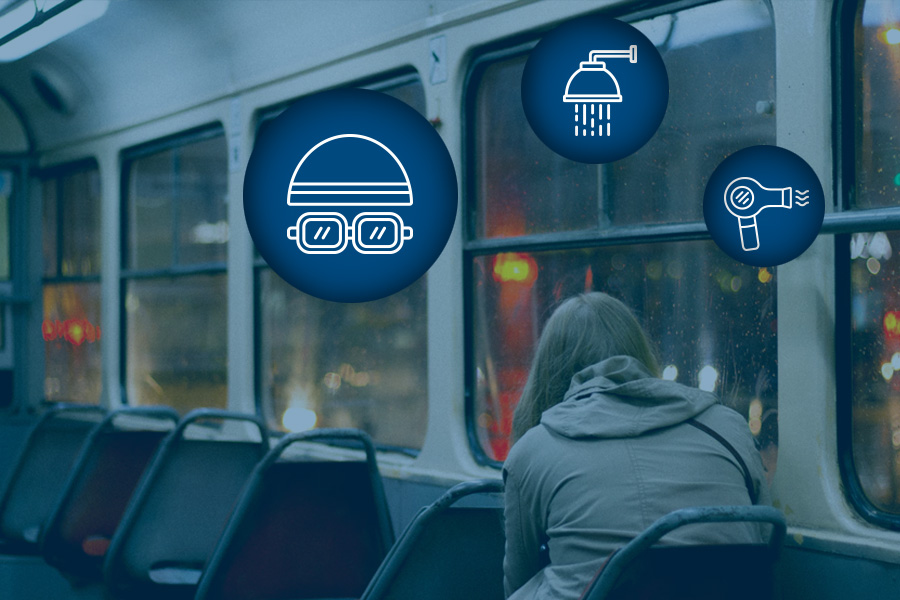Identifying opportunities
Developing an opportunity mindset
To understand and develop an opportunity mindset, you need to understand the difference between ideas, problems and opportunities.
Ideas versus opportunities
Ideas are a great thing. Ideas have led to world-changing products, businesses and more. Everyone has ideas. However, if you’re trying to develop something innovative, an idea isn’t always the best place to start. Sure, ideas can become something amazing, but they’re rarely sustainable on their own and their value and success is often limited if they’re not responding to an opportunity. Furthermore, if you’re just working towards the realisation of a specific idea then you already have a result in mind and you’re not leaving as much room to adapt, change and innovate.
To develop ideas that have the potential to be innovative, successful and sustainable, you should try to start the process with an opportunity. Often the most successful ideas are the ones that emerge from exploring opportunities. This will give you the chance to understand the situation and your potential target audience. You will therefore be in a better position to respond to the needs of this audience and in the right mindset to create value. Without this mindset, you could be developing an idea that doesn’t work in your context or that no one actually wants.
How do you differentiate between an innovative idea and an opportunity for innovation?
An idea is a concept or plan for changing, creating or removing something. A business idea is usually expressed as a plan or suggestion for a product or service. Ideas are usually pretty early stage and haven’t been developed, explored or validated. In many cases, ideas are often wishful thinking that hasn’t been realised, 'Hey, wouldn’t it be cool if …?'
Developing an idea that hasn’t emerged from exploring an opportunity generally means you are solutions-focused rather than open to feedback and adaption. For example, say you wake up one morning with an idea – instant drying swimmers! You think this is brilliant and start planning. This is completely solutions-focused – you’ve got an idea for a specific product that you assume people will want. Whilst this might seem like a great idea, you could invest a lot of time and money in developing the product and find out that no one actually wants it or they already have something very similar.
If you had instead thought about and explored a wider opportunity you’d be better positioned to succeed. For example, you might instead think 'swimming is a very popular activity in Australia and professionals need a way to make the transition from swimming to going to work easier'. You can then explore this opportunity:
- who are these professionals who need a smooth transition from the pool to the office?
- what part of the transition do they actually want to be simplified?
- what kind of solution will they actually use?
You can also explore the situation:
- what is the current transition experience?
- what solutions are people using at the moment?
You can also think about how you’re positioned to respond to this opportunity and reflect on if you have a competitive advantage. Once you’ve explored this process, you’ll be better positioned to make the judgement on whether this is an opportunity you should pursue and an understanding of how you can create value.

Problems versus opportunities
Identifying an opportunity usually means that you’ve got the chance to create something new, to be innovative, to change the way something is or how something is done. When you identify an opportunity, then you are able to take the next step to create value in some way. This is an awesome position to be in - you’re optimistic, you’re excited, you want to know more.
What’s the difference between identifying an opportunity, and finding a problem?
Typically, finding a problem or frustration is a negative experience. It usually means you’ve encountered something that isn’t working or something has gone wrong in your life, or in the life of someone you know. Many people simply accept problems and move on with their daily life. However, if you’re able to view the same situation as an opportunity you have the chance to view it very differently. This is a chance to step out of that frustration and move to a more optimistic and creative mindset. Instead of feeling like everything is going wrong, you think about all the potential value that can be created. This is how we want you to be thinking. However, opportunities aren’t just about reframing problems. There are so many other ways to discover, create and develop opportunities - some that we’ll touch on in this module and some you’ll be able to learn about in the additional resources and your own research.
Going back to our swimming example, if you’re seeing this as a problem you’d be thinking something along the lines of 'Swimming before or during work is so frustrating, my swimmers are wet, the shower line is so long, I don’t have time to dry my hair and I barely have time to do 10 laps before I have to leave'. Thinking like this isn’t very productive until you get to the mindset where you think, 'Okay, so what can I do about this?'
